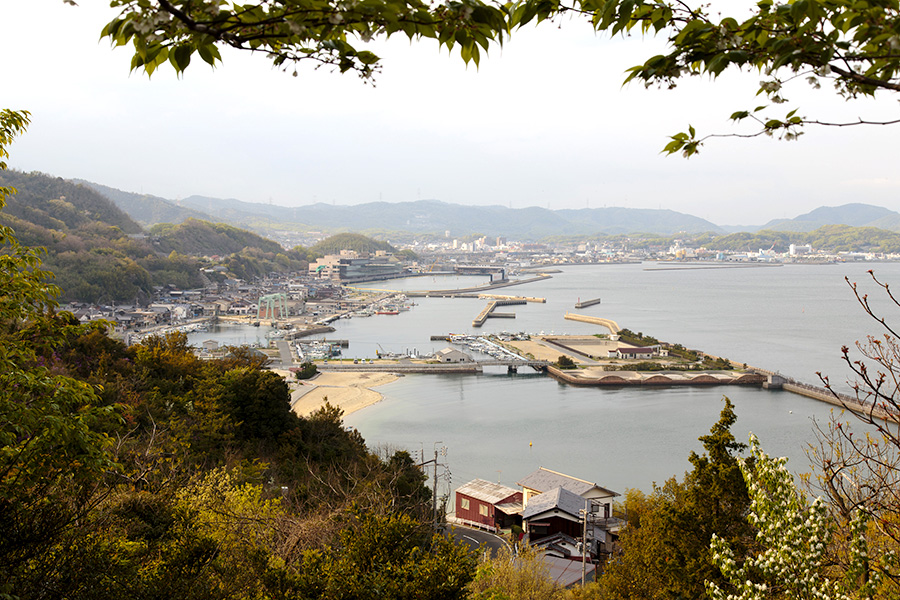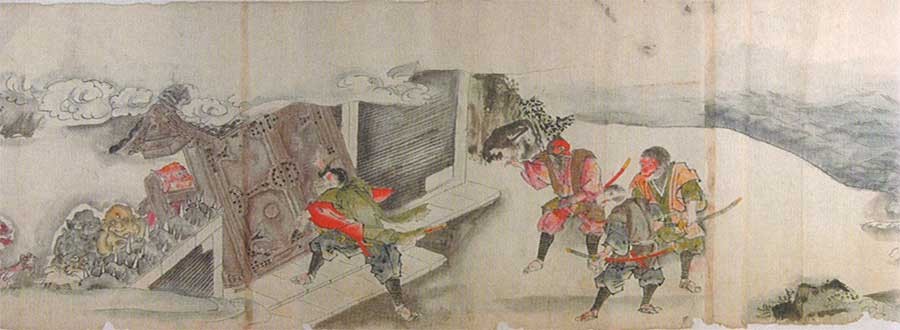About Momotaro Jeans

“Made by hand without compromise”
Our products have proved this slogan,
The Japanese denim brand MOMOTARO JEANS was founded at Kojima Okayama in 2006, where is the birth place of Japanese domestic jeans.
Artisan keeps inherit the great techniques tradition and at a coastal small town, Kojima.
We believe “Jeans” is not only fashion items but also the tool for creating a lifestyle.
Those who succeed in life take care of themselves and select only the best quality tools.
Quality tools serve as an encouragement toward self-betterment and attract good luck and success.
Through our Okayama artisan spirit, we understand what denim is to its core, and our unwavering commitment to the intricate art of dyeing, weaving, sewing, and washing results in the highest quality “Jeans”.
In order to make life, living and the mind richer through jeans (tool), MOMOTARO JEANS is not just a fashion brand that simply offers the latest trends, we are a real clothing brand to be loved forever.
For the enjoyable casual life of young-at-heart adults, for the artisans of life who march to the beat of their own drum, we offer jeans as real quality “tools”.
The History of the development of the jeans industry in Japan

Admiration for America
In the early 1960s when the Tokyo Olympics were held, the youth of Japan highly yearend for jeans as daily life was improving with the advent of the high growth period. Teens wanted wear wanted to wear jeans in a cool way likes the movie star, and rush to stores (used cloth at the time).
Even with an anticipated increase in domestic demand and the desire for all domestic distributors to produce jeans at the time, the reality was that in terms of materials and weaving techniques, the Japanese jeans industry was still far from the “”real thing
Founding an Industry
Denim (material) is the bread and butter of jeans, and denim and jeans cannot be separated from each other. Denim was mainly produced in America and the jeans producers in Japan that emerged one after another until 1975 strived to purchase denim materials produced in America through import agents. Local weaving companies began opening their eyes and thought “Just wait! Okayama has been the domestic production area of cotton fabrics since the Edo period. Let’s make denim better than those made in America.”
Based on Tradition
A dyer in Okayama developed a “continuous process” for industrial production in 1967 by expanding the family business. And in 1970, a dyer in Hiroshima ran an in-depth analysis of the composition of high quality denim produced in America and successfully developed the indigo dyeing machine dubbed “Nintai-go(endurance).” This machine which was the first of its kind in Japan significantly enhanced the completion rate of the “rope dyeing” method that is essential to the production of denim .
The process of combining the “ring spinning” and “rope dyeing” method originally developed in America was not always rational and was also very cost prohibitive. Therefore, by 1980s , this technique had been largely abandoned by rationalist western minds. However the smooth feel and toughness of “rope spun yarn,” combined with the superior color shading of “rope dyeing” continued to be preserved in Japan(Okayama) produced denim, as part of the “commitment of the Japanese mind.”
Acceleration in Development of Domestic Denim
As if in response to this, major domestic cotton spinning companies soon began devoting resources to the production of denim material. A major spinning company in Kurashiki leveraged their development might to upgrade and expand spinning facilities for thick yarn count at their Okayama factory . in 1973 they produced the first domestic heavy ounce denim, and 100% domestic-produced jeans were born at a clothing company of Kojima. After that , demand for domestically produced jeans continued to increase from retail distributors in Tokyo areas where jeans were largely bought , and a movement demanding production sites in nearby Nothern Kanto and Tohoku regions also accelerated.
However, production sites were concentrated in western Japan, in particular, the Seto Inland Sea of Bicchu(Kojima) and Bingo(Ibara,Hiroshima) which had an already established excellent textile industry infrastructure. This led the industrial base to a further build up here , and the area has continued to be the single largest jeans production site to this way.
Momotaro’s Story

Why named “MOMOTARO”
“MOMOTARO” = ”Peach Boy” is one of a very famous fairytale in Japan, The “legend of MOMOTARO” has been passed generations. The legend’s origin is said to come from an “Ura” legend which was has been handed down in Soja-city, Okayama. And many places with mysterious history and culture, remain in Okayama.
A story of rejuvenation?
Today, many people know “MOMOTARO” was born from a peach that came floating down a stream, rolling over and over. However, the popular “legend of MOMOTARO” from the early Meiji period was actually a story of rejuvenation. In this version, MOMOTARO was not born from a peach, but was born to an old couple who ate the floating peach and regained their youth.
The story of pursuing the dreams
The rejuvenation version of the “legend of MOMOTARO” was a folk tale for adults and was born as a story representing dreams and vitality to expand from a small island nation across the vast ocean. Since ages long past, people have pursued their dreams in Okayama. MOMOTARO JEANS is also the story of hard-working denim artisans in Okayama pursuing their dreams to “deliver real jeans to the world.”